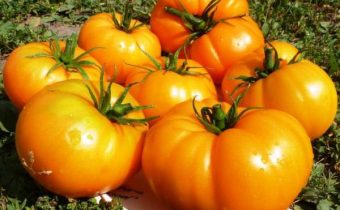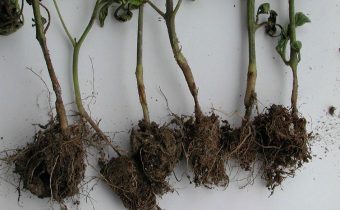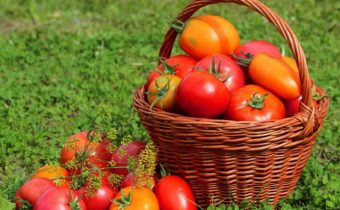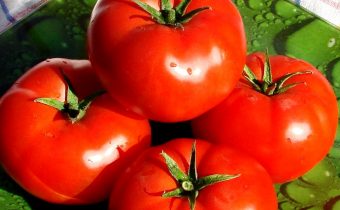Tomato "Orange Elephant": healthy and tasty
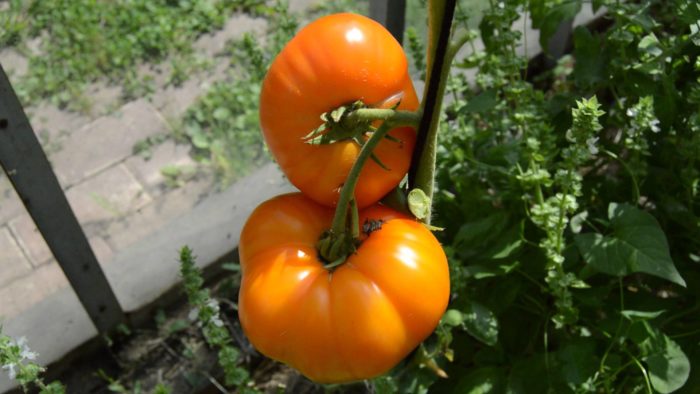
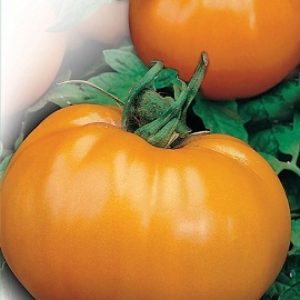 Once it was believed that tomatoes are very thermophilic plants, they can grow and bear fruit only in the southern regions. But science is not in one place. And now Russian breeders are producing all new varieties of tomatoes, which not only successfully grow, but also bear fruit in more and more northern, colder regions. And this is remarkably confirmed by the numerous reviews about the tomato Orange Elephant, its photos, where you can see how high the yield of this tomato is.
Once it was believed that tomatoes are very thermophilic plants, they can grow and bear fruit only in the southern regions. But science is not in one place. And now Russian breeders are producing all new varieties of tomatoes, which not only successfully grow, but also bear fruit in more and more northern, colder regions. And this is remarkably confirmed by the numerous reviews about the tomato Orange Elephant, its photos, where you can see how high the yield of this tomato is.
The orange elephant is one of the group of large-fruited colored Elephants, which grows remarkably in the northern regions and bears fruit in greenhouses, and in the warmer, southern edges is quite productive in open beds. Elephant Group includes several colorful tomatoes: Raspberry, Orange, Pink, Sugar and Black Elephants. It is worth planting them in your own plot - after all, each of them with its own characteristics, however, large tomatoes of different colors are very decorative on the beds and are incredibly tasty and attractive in the plate.
Characteristic and description
The variety of tomato Orange Elephant has outstanding useful qualities and properties, its characteristics and description only confirm its usefulness and usefulness:
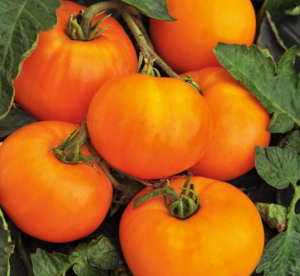
- determinant, mid-season, medium strong;
- grows up to 70 cm, in closed ground it can grow to a meter;
- tomatoes begin to ripen in 110-120 days after germination;
- grows and bears fruit both in open and in closed ground;
- fruiting is quite long, which allows you to harvest a long time;
- good transportability;
- the yield with careful and caring care will be above average - from one bush you can collect 4-5 kg of ripe tomatoes;
- needs tying up - so that the bush does not break under the weight of ripe sun fruits;
- bushes heavily leafy;
- foliage is dark green;
- on the bush usually 5-7 large tomatoes ripen;
- beeing only when necessary - if suddenly spikes appear.
See also: Growing a tomato according to the method of IM Maslova
The color of the fruits of tomatoes has its own characteristics and useful qualities, because the color affects the useful qualities of tomatoes, their taste. Tomatoes Orange elephant stand out for their usefulness and taste. Fruits description:
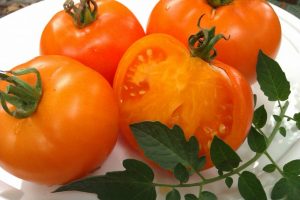
- Tomatoes are flat-rounded, oval, uneven in shape, a bit like an elephant's head;
- large enough - the average weight of fruits reaches 250-300 g, if you follow the rules of agricultural technology for this variety, you can collect fruits up to 500 g
- fruit color is rich orange;
- taste sweet, pleasant;
- tomatoes are dense, strong;
- tomato skin is smooth, thin;
- the flesh is dense, but very tender, fleshy, juicy, with a high content of carotene.
Appointment: salad, for the fresh use, however the Orange elephant perfectly is also suitable for technical processing: juice, pastes, sauces. If these tomatoes are used in canning, it is best sliced. They look very impressive in vegetable cutting with tomatoes of other colors, with other vegetables.
Disease and Pest Resistance
Tomato Orange elephant has good immunity, resistance to temperature extremes, almost not subject to disease. Therefore, it is better to take the necessary preventive measures in advance so that later you do not fight with diseases or pests:
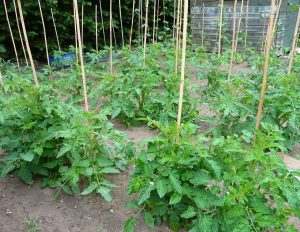
- compliance with simple and easy rules of agrotechnology for this variety;
- observe the distance between the bushes of tomato;
- watering regularity;
- temperature and light conditions;
- top dressing: the specified proportions;
- timely loosening, mulching;
- crop rotation and proximity to other plants;
- preventive spraying with herbal infusions and decoctions;
- removal of diseased plants from the site.
In addition to diseases, tomatoes are threatened by various pests: butterflies, beetles, ticks, slugs, etc.
See also: "Balcony miracle" tomatoes all year round
It is also important to observe the sanitary condition of greenhouses and other types of greenhouse:
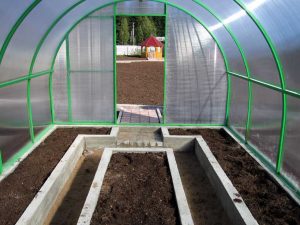
- greenhouses in the autumn should be thoroughly washed after harvesting and plant residues, disinfected. The same procedures can be repeated before planting seedlings in the closed ground;
- not planting the same crop in the same place;
- it is extremely useful to use as neighbors plants medica: mustard, marigold, calendula, etc., which protect and eliminate crops from pests;
- to observe the level of humidity: an excess of moisture provokes fungal infections, putrid phenomena;
- regular airing of greenhouses;
- their correct location, so that plants in greenhouses receive the light necessary for growth and fruiting. If it is not enough, you can finish the culture with special fitolamps;
- maintain the desired temperature inside.
Advantages and disadvantages
Despite the fact that the Orange Elephant is one of the other multicolored Elephants, it has its own individual advantages and disadvantages.
Advantages:
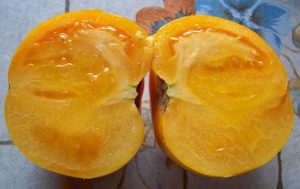
- large, tasty fruits;
- long period of fruiting;
- good keeping quality;
- sustainable transportability unlike other elephants;
- resistance to low temperatures;
- immunity to disease;
- excellent adaptation to any climate;
- resistance to insufficient watering;
- high content of nutrients, vitamins;
- unpretentiousness and carelessness in care and cultivation;
The drawbacks of the Orange Elephant are quite a bit unlike other varieties. It should also be noted that what one considers to be disadvantages, the other considers advantages.
Disadvantages:
- not very large fruits in comparison with the fruits of other Elephants (although for some it is a virtue);
- not so high yield than other counterparts in the group;
- Demanding on the quality of dressings.
Here, perhaps, and all of its shortcomings. Feed the elephant needed to produce large, tasty fruits with a high content of nutrients and vitamins. But it is categorically not recommended to overfeed with organic Elephant - it will increase the green mass to the detriment of yield and quality of fruits. It is better to make complex mineral fertilizers.
See also: Tomato "Rich F1 hut" for those who want to get an early harvest
Features of growing varieties
Agrotechnical cultivation of a variety depends on its characteristics, in particular on the time of ripening of the fruit, on the type (determinant or not), on the type of ripening, etc. The orange elephant is no exception - it has its own characteristics:

- seeds for seedlings should be prepared and sown two months before planting sprouts into the ground - approximately in March and early April (depending on the climatic conditions of the region);
- planted in open ground in the third decade of May-early June (according to weather). In the closed ground can be planted earlier;
- it is better to fertilize the soil in advance: add organic matter for autumn digging, in the spring it is better to use complex mineral fertilizers;
- do not make a dense landing; plant bushes at a distance of 50x50 cm, preferably square-nested method;
- regular watering, but do not allow excessive waterlogging;
- if the soil is acidic, it should be deoxidized by adding chalk, lime, etc .;
- heavy, clay soils should be diluted with a mixture of sand with manure or compost, more often loosen, not overwet;
- timely remove weeds and mulch the soil between the bushes of tomatoes;
- in the open ground, the beds should be positioned from north to south, so tomatoes will be better and longer illuminated and warmed by the sun;
- It is better to tie bushes so that they do not break under the weight of fruits, do not fall to the ground and do not start to rot there;
- tied bushes planted at the right distance, better ventilated, easier to care for and water.
Tomatoes of the Orange Elephant, judging by the numerous reviews and photos, are very undemanding, easy to care for, but incredibly tasty and very useful, beautiful. The one who grows up on the site of multi-colored Elephants, will not regret, will be satisfied. Do not be afraid to experiment with unusual varieties of tomatoes - they give excellent results.
Video: Orange Elephant Tomato Variety


